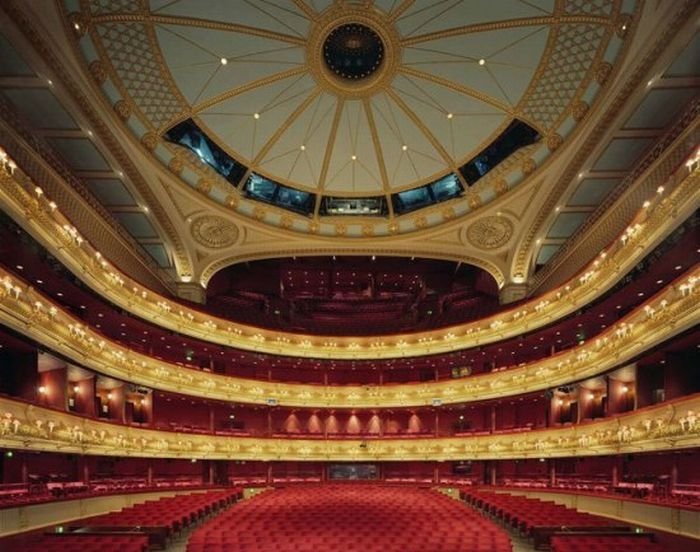|
|
Opera Houses Around The World
|
Although stage, lighting and other production aspects of opera houses often make use of the latest technology, traditional opera houses have not used sound reinforcement systems with microphones and speakers to amplify the singers, since trained opera singers are normally able to project their unamplified voices in the hall. Since the 1990s, however, many opera houses have begun using a subtle form of sound reinforcement called acoustic enhancement .
Often, operas are presented in their original languages, which may be different from the first language of the audience. For example, a Wagnerian opera presented in London may be in German. Therefore, modern opera houses may assist the audience by providing translated supertitles-- projections of the words over or near the stage. More recently, electronic libretto systems have begun to be used in some opera houses, including New York's Metropolitan Opera, Milan's La Scala and the Crosby Theatre of the Santa Fe Opera, which show the words on individual screens attached to the backs of the seats so as to not interfere with the visual aspects of the performance.
A subtle type of sound reinforcement called acoustic enhancement is used in some opera houses. Acoustic enhancement systems help give a more even sound in the hall and prevent "dead spots" in the audience seating area by "...augment a hall's intrinsic acoustic characteristics." The systems use "...an array of microphones connected to a computer connected to an array of loudspeakers." However, as concertgoers have become aware of the use of these systems, debates have arisen, because "...purists maintain that the natural acoustic sound of voices instruments in a given hall should not be altered."
|
|









